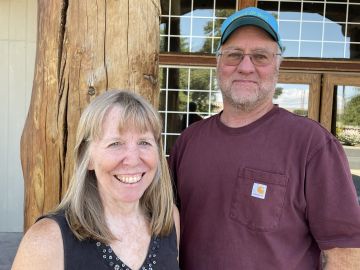A Native American man walked onto the construction site.
“What are you guys building here?” he asked, watching volunteers place log walls on the concrete foundation of the All Nations Center in Wapato, a town in the U.S. state of Washington. “Another church?” he said, shaking his head. “You guys don’t even know what day of the week to keep.”
A construction leader, Jeff Weijohn, struck up a conversation with the man, who had never heard of Seventh-day Adventists. The man thought that the new church would be open for worship on Sunday, but he believed that the Creator should be worshiped on Saturday.
Jeff was surprised. “It was the first time that I heard that some Native Americans have a history of Sabbath keeping,” Jeff said in an interview.
Later, Jeff sought clarification from a historian familiar with Native American history. The historian confirmed that one or two tribes on the Yakama Indian Reservation, where Wapato is located, traditionally believed that the seventh day was the Creator’s day and worshiped Him on that day.
The realization that God had planted a Sabbath seed in Native hearts energized Jeff and his wife, Terri, in mission outreach to Native Americans.
The outreach program got its start with the help of a Thirteenth Sabbath Offering in 1990. A highlight of the program is the All Nations Center, which opened in 2001 and was designed as a multipurpose building. It has a worship corner, where people gather to worship on Sabbath mornings; a food area, where meals are served and an annual Mother’s Day brunch draws 300 to 400 people; and volleyball and basketball courts, where up to 200 children and their parents come for game nights. The center also offers day camps, Vacation Bible Schools, and after-school tutoring.
Native Americans and others can lease space. “One reason we built the facility was because the community had nowhere to meet,” Jeff said.
In a notable instance, a Native American leader chose the site over a native-owned casino to conduct health seminars, saying gambling was destroying his people.
“It was quite a testimony that he didn’t want anything to do with the casino,” Jeff said.
The center’s culturally sensitive concept has proven so successful that it has been replicated elsewhere, including in Canada, he said.
Thank you for your Thirteenth Sabbath Offerings that continue to make a difference. Pray that God uses them to proclaim the everlasting gospel to every tribe, tongue, people, and nation.


